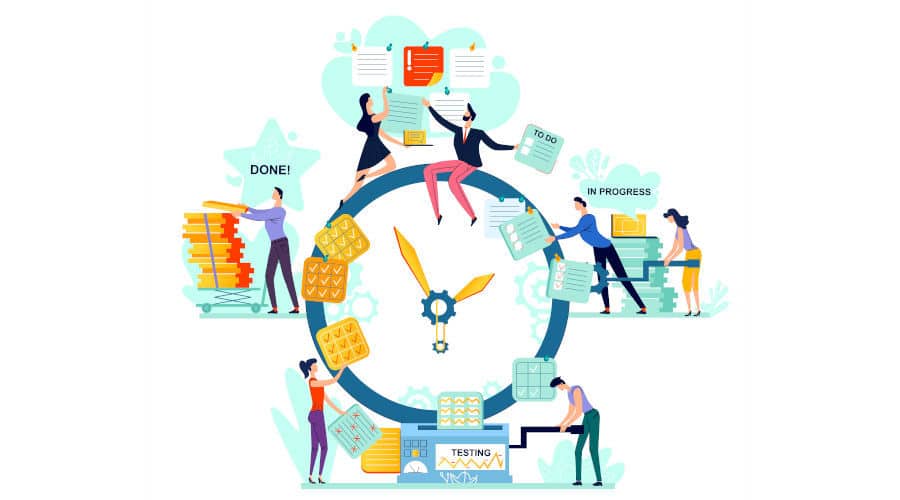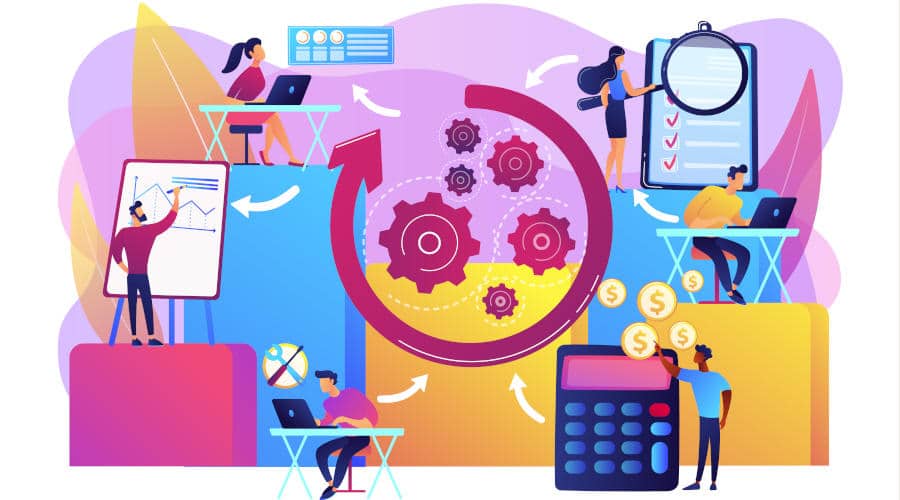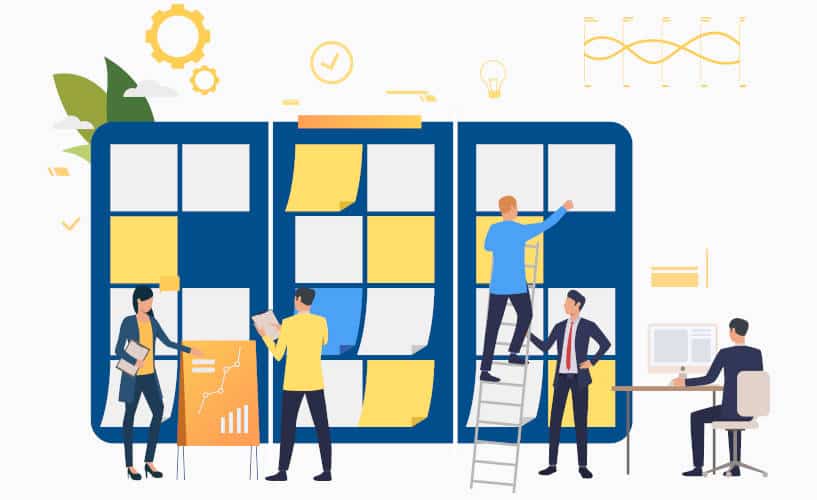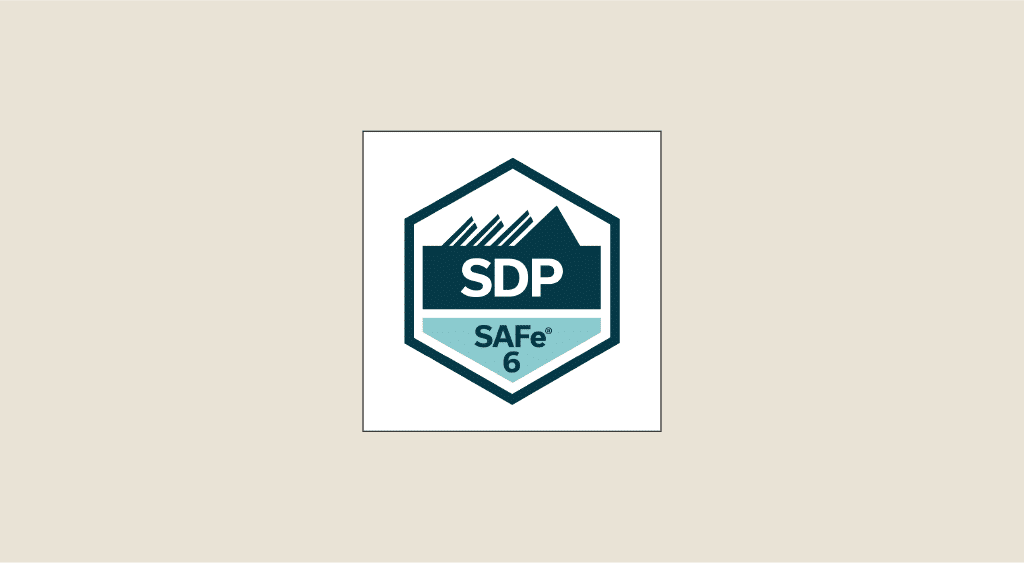SAFe DevOps is a fusion of the SAFe framework and the DevOps methodology, designed to combine all the advantages of these two innovative approaches. Discover its principles, its benefits and how to master it!
In order to remain competitive and adapt quickly to market demands, software development companies are constantly looking for new methodologies.
Created in 2011 by Dean Leffingwell, the Scaled Agile Framework (SAFe) provides a framework for adopting agility at the scale of the largest organizations.
It offers a structured approach to the planning and creation of high-quality software products, and has been adopted by a large number of companies.
But agility isn’t just about development. It also encompasses effective delivery practices to ensure that functionality reaches end-users quickly.
To achieve this goal, it is possible to combine the SAFe framework with DevOps principles to take advantage of both approaches and benefit from their synergy: this is SAFe DevOps.
💡Related articles:
What is the SAFe framework?
SAFe is initially designed to address the challenges of team coordination, communication and alignment in large organizations, bringing together practices, roles, responsibilities and processes for adopting and implementing agility in a consistent and coordinated way at all levels of the organization.
In addition to the fundamental agile principles, SAFe offers specific concepts to facilitate collaboration and synchronization of efforts between different teams working on complex products.
It offers a variety of planning practices and cadences to effectively manage continuous delivery, quality and responsiveness to change.
The framework comprises several levels of organization. The core Agile Team uses agile methodologies to develop and deliver features, while the group of coordinated Agile Release Train (ART) teams work together to develop and deliver features at regular intervals: Program Increments (PIs).
At the top level, the Grand Train Agile or Solution Train coordinates ARTs working on complex, interdependent products. Other key roles include Product Owners, Scrum Masters and Product Managers.
SAFe’s flexible structure can be adapted to the specific needs of each organization, and is widely used in companies seeking to adopt agility on a large scale while maintaining strategic alignment, quality and speed of delivery.

What is SAFe DevOps?
Much more than a simple fusion of agile and DevOps concepts, Safe DevOps is a systemic approach that harmoniously integrates the fundamental principles of SAFe with modern DevOps practices.
Unlike the old approach, where development and operations operated in separate silos, this contemporary method promotes close collaboration throughout the software development lifecycle.
The main aim is to ensure a continuous flow of deliveries while maintaining product quality, stability and safety.
This requires efficient automation of processes, transparent communication between teams and a culture of trust that encourages the taking of calculated risks.
SAFe DevOps seeks to eliminate delays, human error and inefficiencies by encouraging the automation of testing, deployment and monitoring, while enabling rapid iterations to meet changing user needs.
Les principes fondamentaux du SAFe DevOps
The basic principles of SAFe DevOps are guided by the philosophy of agile, safe and high-quality delivery. It is the integration of these principles into the SAFe framework that creates a symbiosis between agile and DevOps practices.
💡Related articles:
One of the pillars of this approach is the creation of a continuous, uninterrupted workflow, enabling teams to deliver functionality rapidly while maintaining high quality.
To achieve this, automation plays a crucial role. Processes such as compilation, testing, validation and deployment are automated to reduce manual intervention and the risk of human error.
This enables rapid and reliable delivery cycles, where new features can be deployed in production in a matter of hours rather than weeks.
Similarly, the automation of CI/CD (continuous integration and deployment) promotes rapid feedback. Potential bugs can be detected quickly thanks to automated testing, enabling developers to correct them immediately.
Thanks to this proactive approach, delays and costs associated with resolving quality issues later in the cycle are considerably reduced.
Another key principle of SAFe DevOps is agile delivery. This involves incorporating agile principles into the delivery process.
Rather than delivering massive, heavy versions of the software, teams chop up functionality into smaller iterations or batches known as “increments”. These are delivered at regular intervals, enabling users to benefit rapidly from new features and enhancements.
This agility provides greater flexibility to respond to changes in demand and user feedback. Priorities can be adjusted frequently in line with market needs and changing requirements.
This eliminates the risks associated with lengthy, cumbersome developments, where functionalities can become obsolete before they are even delivered.

The third fundamental of SAFe DevOps is the culture of trust. It encourages collaboration and transparent communication between development teams, operations teams and other stakeholders.
When teams work hand in hand, they can share knowledge, identify challenges and solve problems more effectively.
Trust also enables teams to take calculated risks and experiment with new ideas. Rather than pointing the finger at failure, the emphasis is on learning and continuous improvement.
What’s more, this culture also fosters acceptance of change: essential in an agile environment where adaptability is a key skill.
SAFE DevOps is also aligned with DevSecOps, a recent evolution of DevOps that emphasizes security from the earliest stages of development right through to production. This integration reduces the risk of vulnerabilities and ensures that applications are developed and deployed securely.
By bringing these principles together, SAFe DevOps offers a coherent framework for the successful integration of agility and DevOps practices. Companies can therefore unleash the power of rapid innovation while maintaining operational stability. What are the benefits of SAFe DevOps?
The successful integration of SAFe DevOps brings many benefits. Firstly, the combination of and DevOps principles dramatically improves the speed and frequency of delivery, enabling companies to respond rapidly to changing user needs.
Automation reduces human error, speeds up processes and guarantees consistent quality. What’s more, collaboration between Agile and DevOps teams fosters innovation and creativity as experts from both fields work together to solve complex problems.
The culture of trust and continuous learning creates an environment conducive to constant improvement.
In reality, the adoption of SAFe DevOps transforms the organization in depth. Traditional silos between teams are broken down, automated processes free up time for high value-added tasks, and the organization becomes more resilient to change.
Teams are more aligned with business objectives. As a result, customer satisfaction is enhanced and the company’s competitive position is improved.
SAFe DevOps implementation
Successful integration of DevOps teams with Agile teams within SAFe requires careful coordination.cross-functional Agile trains teams work together to deliver value increments at regular intervals, typically every 8-12 weeks, as part of a Program Increment (PI).
This approach synchronizes development, testing and deployment efforts for consistent, smooth delivery.
SAFe DevOps implementation also relies on automation. CI/CD systems automate the workflow from development to production, while ensuring that every change is tested, validated and deployed consistently.
Automation tools also include container management platforms and monitoring solutions for early detection of performance and stability issues, enabling rapid response.
To overcome the challenges of adopting this methodology, it’s best to start with pilot projects before rolling it out on a large scale. This enables processes to be tested and approaches refined before full implementation.
Metrics can also be used to assess the effectiveness and impact of SAFe DevOps. This includes tracking delivery times, deployment frequency, code quality and user feedback.
To create a common understanding and mitigate potential resistance to change, the best solution is to provide in-depth training to teams on SAFe DevOps concepts and potential benefits.

SAFe DevOps certification
The organization behind the Scaled Agile Framework (SAFe), Scaled Agile Inc, is issuing a formal recognition: the SAFe DevOps certification.
It attests to an individual’s competence and knowledge in the application of DevOps principles and practices within the SAFe framework. It is a validation of the qualifications required to contribute effectively to the successful implementation of SAFe DevOps in a professional environment.
So who is this certification for? It is designed for all professionals wishing to deepen their understanding of the combination of SAFe’s large-scale agility and modern DevOps practices.
This includes developers wishing to learn how to integrate DevOps practices into a SAFe context by automating development, testing and delivery processes.
It also includes quality engineers wishing to understand how to integrate automated testing and quality assurance practices into the SAFe DevOps workflow.
Similarly, operations managers (Ops) looking to align their operational practices with agile methodologies and effectively support development teams can benefit from this certification.
Scrum Masters and Product Owners wishing to strengthen their skills in agile project management and alignment with DevOps practices are also part of the target audience.
To obtain SAFe DevOps certification, candidates must pass an online exam assessing their knowledge of concepts, principles and best practices.
Topics covered include CI/CD pipeline automation, culture of trust, Agile delivery and cross-team collaboration. There are also questions based on real-life scenarios to assess the candidate’s ability to apply the concepts in real-life situations.
If you pass, you can obtain certification, which will remain valid for a limited period. You will then need to take a refresher exam to keep it.
Conclusion: SAFe DevOps, the synergy of modern software development methods
By harmoniously combining SAFe and DevOps principles, SAFe DevOps enables you to benefit from the advantages of both approaches in terms of agility and software quality. That’s why this framework is enjoying growing success in the enterprise.
To master it and prepare for SAFe DevOps certification, your best option is to choose DevU. Our training gives you all the skills you need to become a DevOps engineer!
You’ll learn about application development with Python, Linux systems administration, databases and SQL, as well as CI/CD tools such as Git, Docker, Kubernetes and Jenkins.
In addition, you’ll be introduced to automation solutions such as Terraform and Ansible, and learn how to handle monitoring software such as Prometheus, Grafana and Datadog. This program, designed in partnership with AWS, will also introduce you to the Amazon cloud and its DevOps services!
At the end of the program, you’ll receive a state-recognized “DevOps System Administrator” diploma at bac+3 or 4 level, a Panthéon Sorbonne Continuing Education certificate and AWS Solutions Architect – Associate certification.
This training can be completed entirely by distance learning in BootCamp, alternance or continuing education, and our organization is eligible for funding options.










